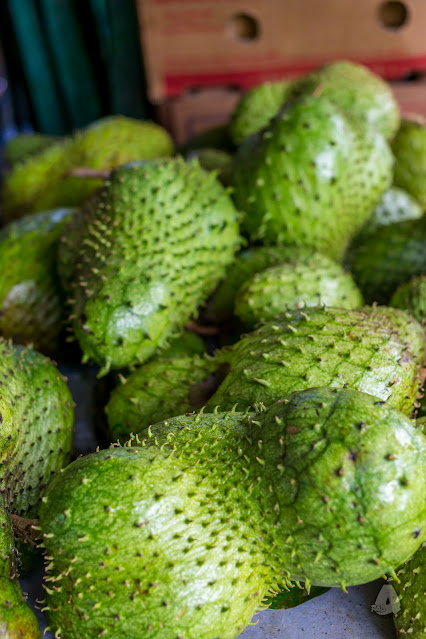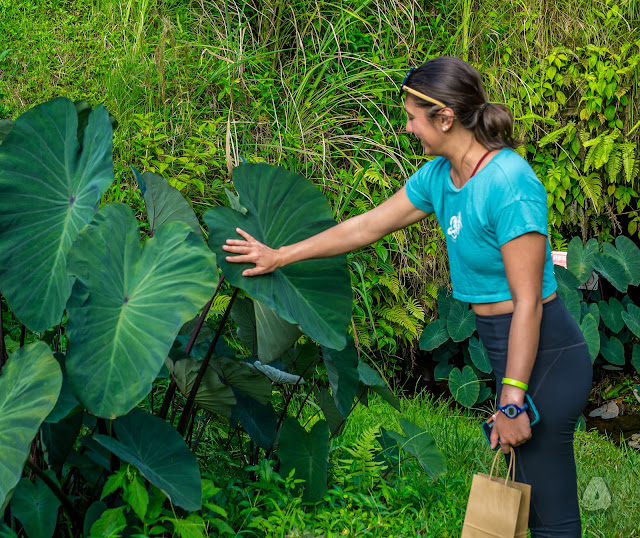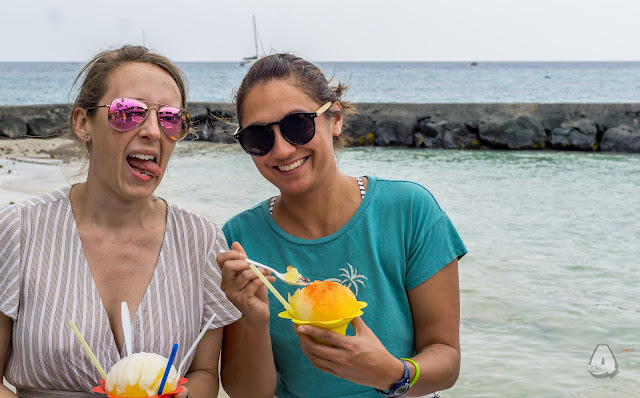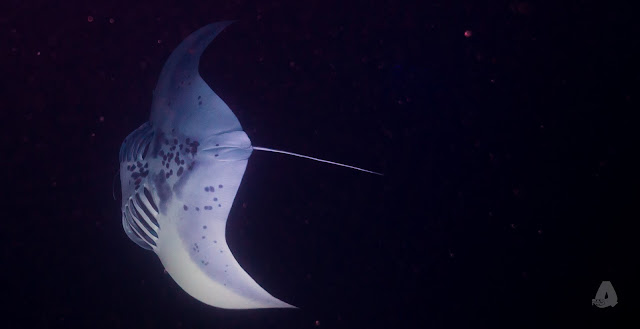2022-05-15 Diving The Big Island with Manta Rays
Hilo, Hawaii, Hawaii
Back to Hawaii we go, after nearly a decade since my last visit. However this time, we go to the Big Island to do some diving with Manta Rays! My last and only encounter with Manta Rays was in the Maldives back in 2009. That one was a day dive in some pretty shallow water with snorkelers on the surface and divers on the floor. This one was pretty much the same except this one is at night. To add to this dive trip, Hawaii is also one of only a handful of places to offer a Blackwater dive. More on that later.
LAX to Honolulu on Oahu is about 5.5 hours then it’s a quick 35 min flight to Hawaii. I’m fairly sure that we were the only plane in the entire Hilo airport when we landed. The gates were all open air and we were at our rental car about 5 minutes after we stepped off the half full plane. Check into the beautiful Naniloa Hilton hotel, grab a Maui seltzer, drop off our bags, then we are back out the door to explore downtown Hilo. The palm trees in Hawaii are plentiful but they seem to have all been planted strategically as opposed to being an indigenous plant that is just everywhere. None the less, all the lush greenery seems to be well manicured with no dead palm fronds or weeds to be seen. Downtown Hilo predictable lies next to a coast line, and we park 25 steps from the water on one side and 25 steps from shops and restaurants on the other side.

First stop, farmers market. Coconuts, mangos, sour sop, avocados the size of cantaloupes, longan, the list of tropical fruits go on and on. We browse some clothing stands and roam about and before we know it we find a small locals shop that sells shave ice on one side, and poke and lunch plates on the other side. To be fair, every shop in Hilo seemed like a locals spot with the vibe of the entire town following suit. Hilo couldn’t be more different than Honolulu, very few souvenir shops, very few tourists, polite drivers and EVERYONE on Hawaii time. It was a pace of Hawaii that I miss very much and haven’t seen since I was 4 year old living on the Navy base in Honolulu.

Let’s go see some stuff! Whitney found a chocolate tour at Hawaii’s cocoa plantation and that was our first destination. We got a tour of the various state of maturities of the cocoa plants they have at this location, learning some pretty interesting things about the cocoa plant. For instance, the blossoms are very beautiful and small and will become a cocoa pod. However, at some point, the plant will decide which pods will mature, and the other ones will have their nutrients pulled back into the plant for the chosen pods. They took us through their cocoa seed processing including the greenhouse where the dry out the seeds. With just some insulation on the walls and a transparent roof, the drying rooms reach over 120 F, with expended energy. Additionally, all the water for these plants come from rain. The rest of the plantation had palm oil trees, longan trees, coffee plants and other plants they were experimenting with. Right outside of the main building was a sunken lava tube that they made into a beautiful exotic plant escape with orchids, taro plants, baby pineapples, plumerias and a bunch of other plants that my greenish thumb couldn’t name.
Day two took us across the island from Hilo to Kona. It’s about a 2 hour drive and you drive through lava fields and the landscape changes dramatically from sea level to 7,000 ft then back down to sea level again. When we get to Kona, we sample the coffee and play with some brightly colored lizards. Our major meal is at Super J’s. This place is authentic as it comes, locals arriving shortly after opening to order lau lau by the 50’s. There is one long table that seats maybe 10 people while the other table is being used to make taro haupia pies. They offer two dishes lau lau (pork or chicken) and kalua and cabbage. We asked for some pork lua lau and the special fatty pork lau lau (you have to call ahead and reserve), a kalua cabbage and a slice of taro haupia. The meals were on point, authentic and that’s it; no fluff. The ladies working here were the epitome of aloha: welcoming, chatty and quick to offer advice and a story. Definitely come here if you want to eat like a local, but just know that the menu is limited.
We had a few hours before our dives so we caught a brewery tour of the Kona Brewing Co. Interesting fact, all the beer brewed in Hawaii, stays in Hawaii; none of it goes to the mainland. There are three Kona breweries that supply Kona beers and seltzers to the US states east of the Pacific via Anheuser-Busch. All beer that is canned in Hawaii is labeled as such and also the can has a distinct 3 ridges on the top part of the can.
We spend the rest of the time in Kona at the shoreside shops looking for spam musubi in the local ABC stores and enjoying the required shave ice with macadamia nut ice cream. Holly and I got guava, coconut and pineapple, FYI.
Time for the main event!
We booked our dive with Big Island Divers and it was about $200 for the
two tank night dive including manta rays and $250 for the black water
dive. The outfit was well equipped $40
got us a full kit rental. We basically
just showed up got fitted for flippers and got on the boat. Easy peasy. The ride out to the dive site was a very
quick 10 minutes on a decent dive boat that was still able to get on plane and
run around 15-20 knots. The first dive
was pretty uneventful though it was nice to dive in 79 deg F water again and
have unlimited visibility again. This
was Holly’s first tropical dive so I was mostly concerned with watching over
her, but of course she managed to high five a sea urchin. A manta ray did some cruising by to check us
out right at the end of our dive. There
also was a field of garden eels and a really big puffer fish that I couldn’t
get pics of either. It was on this dive
that I also found out that the GoPro 7 is only good to 35 ft depth. Oh well.
We got briefed for the manta ray dive during our surface
interval and caught a beautifully orange and red sunset. To attract the rays, they set up something
called a campfire. Essentially is a
circular set of rocks with various sets of lights pointed straight up. The plankton are attracted to the lights and
the mantas come and eat the plankton. We
sit, kneel or lay behind the rocks and watch as these majestic rays swoop slowly
in front and above us and eat. Apparently
if you are the first one to photograph an unidentified manta ray, you get name
it! Also, the two arm like things that
protrude from a manta’s mouth is used to funnel plankton into its mouth and
through its massive gills. If they are
pointed out, the are eating, if they are tucked away, they aren’t eating. Considering that mantas spend 20 hours a day
eating, you’re more likely to see those things extended then not.
Almost immediately after hitting the sea floor at 35 feet, we see a manta ray. It’s slow going for the first 20 minutes seeing the occasional swoop swallow and gulp. For the last 20 mins, it’s non-stop feeding with as many as 4 at a time within eyesight. We were told later that there were about 9 different rays feeding at the campfire with the average being 2. The biggest identified manta ray in that location is Big Bertha who has a 14 foot wingspan, I’m not sure if we saw her but we did see one that looked to be almost that big that only had one mouth appendage.
The last day was a bonus day where we day drank, got more poke, got mochi (order ahead), and visited a live volcano and saw actual active lava. The town and the hotel was littered with high school or college graduate celebrations, but I noticed that the locals were only picking up supplies for a celebration at home. The town itself was almost empty and by 9pm, almost every restaurant in town was closed. We barely made it to a drive thru for some loco moco, spam, Portuguese sausage, teriyaki chicken and lau lau that took half an hour to get. They take Hawaii time seriously here.
All and all, this trip was a wild success checking the manta ray box, opening up Blackwater dives, active lava, lots of food, quality time with Whit and Holly and setting quite the bar for Holly and my wedding anniversary. I’d come back to the Big Island and do a few more things and maybe stay in Kona, but probably only for a long weekend again.





























































































